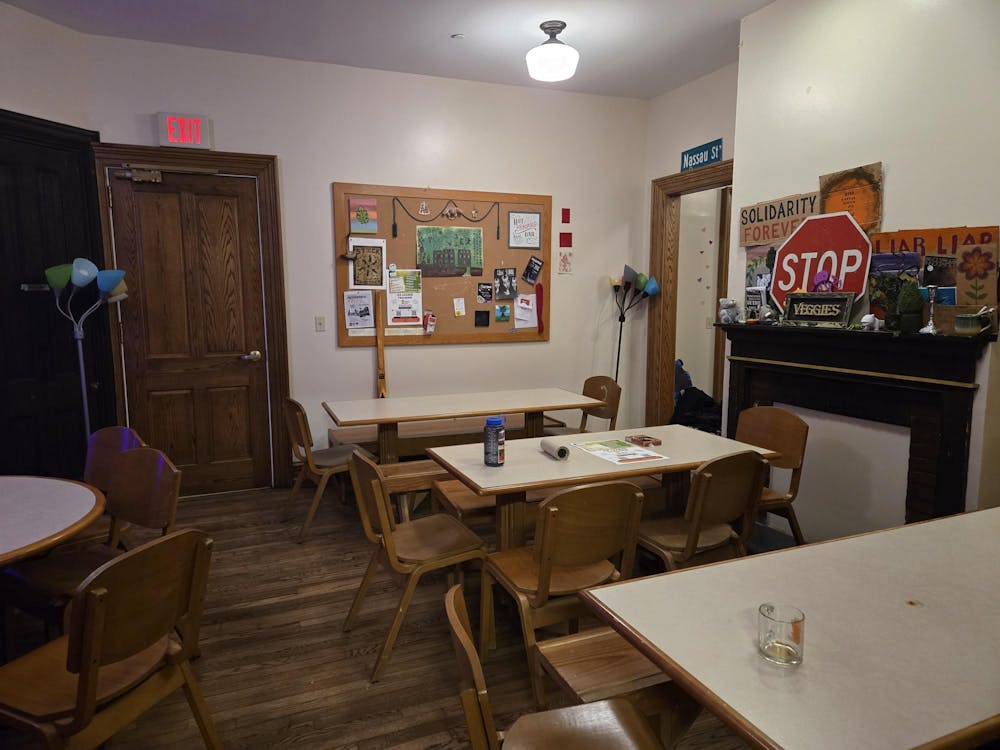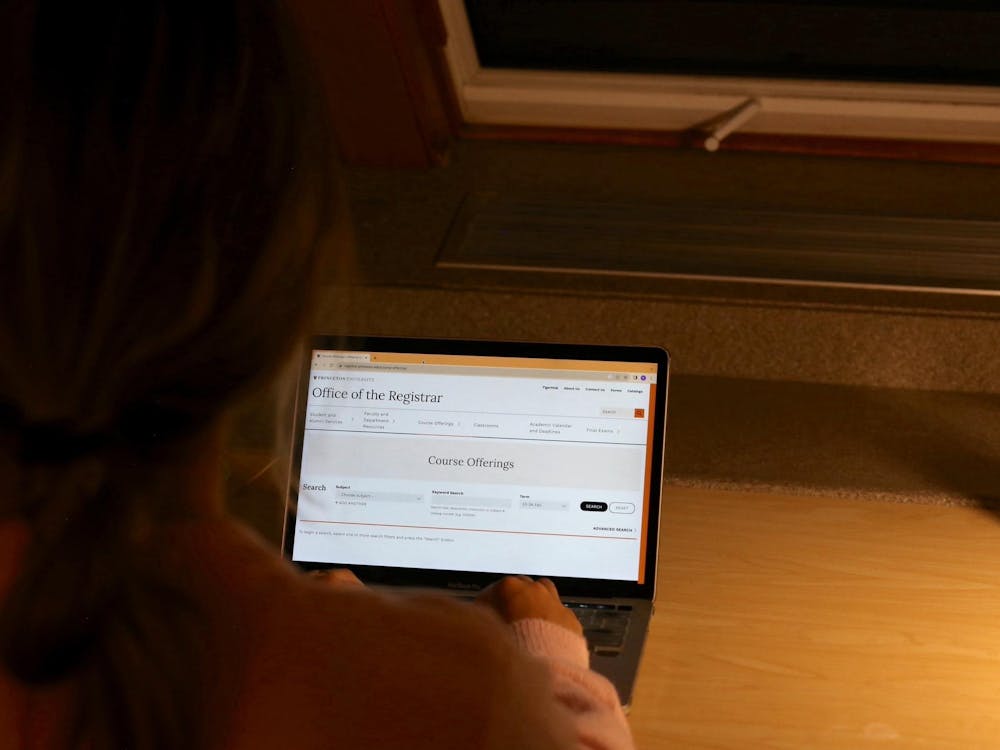Just off campus, in a slanted, unassuming house, a small but vibrant community of students comes together to cook and eat vegetarian meals. The walls are covered in an eclectic combination of art — a stop sign, photos of Civil Rights leaders, a 3D-printed Bulbasaur, and more. This is the 2 Dickinson Street Co-op (2D).
2D is one of four co-ops at Princeton. A popular option for upperclass students who go independent, the co-op accepts students through a lottery system. Each member is responsible for one cook shift, which usually takes about two hours, and one chore, which ranges anywhere from picking up produce orders to baking bread, per week. Unlike the other co-ops, which have a kitchen and dining area in a residential building, 2D has its own off-campus house. After visiting the Scully Co-op in the fall, I spent an evening at the 2D Co-op to see what sets it apart.
Upon arriving, I stepped into a toasty coat room where I was greeted by a cat picture taped to the wall. It was clear from the start that while 2D is an upperclass student dining space like the eating clubs, the atmosphere of the house was entirely different — more student-run and intimate.
The dining area was small and cozy, almost like a summer camp, with mismatched chairs around picnic tables all crammed into one room. Rather than one main dish, there were various trays of entrées, all either vegan or vegetarian, including pinto bean stew, rice, mashed potatoes, baked tofu, cooked mushrooms, and a kale salad. Like the chairs, the plates, bowls, and flatware were a hodgepodge of sizes and colors.
At the meal, I sat down with Collin Guedel ’26, the club’s acting “Minister of Truth” (their term for president) to discuss the culture and community at 2D.
2D aims for about 50 members each semester, although the number usually decreases slightly after the first couple weeks to somewhere in the 40s, with the co-op admitting most or all students on the waiting list. Despite serving exclusively vegetarian meals, Guedel estimates that only about half of the co-op is vegetarian or vegan.
“The eating clubs aren’t really known for having a lot of options [for vegetarians],” Guedel told me.
For many members, though, it was the bicker process that led them away from eating clubs, which can be daunting for sophomores as class size grows and eating club admission rates shrink. Others are drawn to the opportunity to learn to cook.
Some members are also uncomfortable with the cost of eating clubs, despite financial aid offered by the clubs. For comparison, one semester at 2D costs $750 and includes seven dinners and two brunches with no restrictions on guest meals, averaging under $5 a meal — not to mention the 24/7 access to leftovers, snacks, and kitchen use.
Sharing and abundance are central to the 2D culture. With everyone packed together in the dining area, it’s easy to make friends and connections in the group. Leftovers are central to the abundance culture. Guedel tells me that the club’s informal policy is that “if you don’t have leftovers, it’s not enough food.” As another symbol of the sharing culture, towards the end of the meal, if there isn’t enough of something to put it away in the fridge, one of the chefs brings it to the meal area and bangs on the side of the pot with a spatula to see if anyone will eat it in order to avoid food waste.
Rather than having a meal plan for the week, which might result in wasted money from buying niche ingredients only used in one recipe, chefs arrive for a cook shift and decide what to make based on what’s available in the fridge. The co-op stays stocked up on vegetarian staples like beans, tofu, and veggies.
Older members on a cook shift often help younger members figure out how to assemble meals from the available ingredients, as each cook is usually responsible for one entrée per meal. The creative approach to meal planning reflects what it’s really like to cook in a home; oftentimes, you’re left to look through the fridge and figure out what goes together for a meal.

The most exciting moment of the meal was when spontaneous clapping broke out at one of the tables and spread to the whole room. Afterwards, Guedel explained to me that at each meal, someone starts a round of applause for the evening’s cooks as a thank you for the meal.
At the end of the meal, each member washes their own dishes and places them in a drying rack to distribute the workload evenly, while the meal’s chefs put away leftovers and wash pots and pans.
2D also has social events for its members, much like the eating clubs. They have a party each semester, one named “Broccoli Rave” (a play on broccoli rabe), and another called “Boiler Shroom” (a play on Boiler Room). Beyond that, they host game nights and other events for their members to solidify the bonds formed over shared meals.
As a whole, a meal at 2D is a community experience that emphasizes connection and camaraderie. In our discussion, Guedel admitted that members of 2D “like to joke that [they’re] an anarchy first and a dictatorship second.” And while that may show the playful, jokey energy of the co-op, I got the sense that the statement isn’t exactly accurate to the experience.
Rather, 2D has an easy harmony with good food and good fun. For students looking for a cheaper alternative to eating clubs, with a designated space and a more hands-on approach to food, 2D might be the place for them.
Lulu Pettit is a member of the Class of 2027 and a senior writer for The Prospect from the suburbs of Philadelphia. She can be reached at lp3153[at]princeton.edu or her Instagram @itslulupettit.
Please send any corrections to corrections[at]dailyprincetonian.com.








